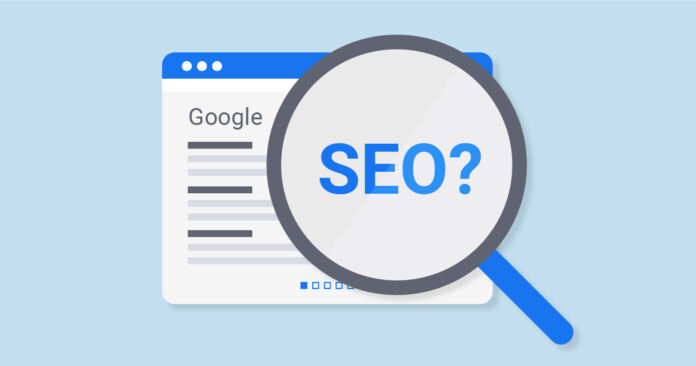Contents
- Introduction
- Understanding Your Target Audience
- User-Friendly Website Design
- Search Engine Optimization (SEO) Techniques
- Social Media Marketing
- Email Marketing Campaigns
- Pay-Per-Click (PPC) Advertising
- Customer Reviews and Testimonials
- Utilizing Influencer Marketing
- Mobile Optimization
- Analyzing Data and Metrics
- A/B Testing and Continuous Improvement
- Providing Exceptional Customer Service
- Building Trust and Credibility
- Conclusion
Introduction
In the fast-paced world of e-commerce, having a well-structured sales strategy is crucial for the success of your online business. This comprehensive guide will walk you through the essential steps to boost your e-commerce sales and maximize your profits.

Understanding Your Target Audience
Before diving into sales tactics, it’s vital to understand your target audience. Conduct thorough market research to identify demographics, preferences, and pain points. This knowledge will inform your marketing strategies and product offerings.
User-Friendly Website Design
A seamless user experience is paramount. Ensure your website is easy to navigate, mobile-responsive, and visually appealing. Implement clear calls-to-action (CTAs) and optimize loading times for a frictionless shopping experience.
Search Engine Optimization (SEO) Techniques
Keyword Research
Identify high-ranking keywords relevant to your products or services. Use tools like Google Keyword Planner to discover popular search terms with low competition.
On-Page Optimization
Optimize product descriptions, meta titles, and alt tags with chosen keywords. This helps search engines understand the content of your pages, improving your visibility in search results.
Quality Content Creation
Produce engaging, informative content that adds value to your audience. This can include blog posts, product guides, and videos that showcase your expertise and build trust.
Social Media Marketing
Leveraging Platforms
Choose social media platforms where your target audience is most active. Create a content calendar to maintain a consistent online presence.
Engaging Content
Craft compelling posts, images, and videos that resonate with your audience. Encourage interaction through comments, likes, and shares to increase your reach.
Email Marketing Campaigns
Building a Subscriber List
Collect email addresses through sign-up forms on your website and incentivize subscriptions with exclusive offers or valuable content.
Personalization and Segmentation
Tailor your email campaigns based on customer behavior and preferences. Personalized content leads to higher open and click-through rates.
Pay-Per-Click (PPC) Advertising
Google Ads
Utilize Google Ads to target potential customers actively searching for your products. Set clear ad objectives and monitor performance regularly.
Facebook Ads
Leverage Facebook’s powerful targeting options to reach specific demographics. Create visually appealing ads with a compelling copy to capture attention.
Customer Reviews and Testimonials
Encourage satisfied customers to leave reviews. Showcase these testimonials on your website to build trust and credibility among potential buyers.
Utilizing Influencer Marketing
Partner with influencers whose audience aligns with your target market. Their endorsement can significantly impact purchasing decisions.
Mobile Optimization
With the rise of mobile shopping, ensure your website is mobile-friendly for seamless browsing and purchasing on all devices.
Analyzing Data and Metrics
Conversion Rates
Monitor conversion rates to identify the most effective strategies in turning visitors into paying customers.
Customer Behavior
Use tools like Google Analytics to track user behavior on your site. Understand what drives engagement and adjust your approach accordingly.
A/B Testing and Continuous Improvement
Experiment with different strategies to identify what resonates best with your audience. Continuously refine your tactics based on data-driven insights.
Providing Exceptional Customer Service
Deliver prompt, helpful customer support to create a positive buying experience. Happy customers are more likely to become repeat buyers and brand advocates.
Building Trust and Credibility
Be transparent and honest in your dealings. Display trust badges, secure payment options, and clear return policies to reassure customers.
Conclusion
Implementing a robust e-commerce sales strategy is the cornerstone of a thriving online business. By understanding your audience, optimizing your website, and leveraging various marketing channels, you can significantly increase sales and create a loyal customer base.
FAQs
- How long does it take to see results from an e-commerce sales strategy?The timeline for seeing results from an e-commerce sales strategy can vary depending on various factors, including the industry, competition, and the specific strategies employed. Generally, you may start to see initial improvements within a few weeks to a couple of months. However, it’s important to note that long-term success often requires consistent effort and ongoing optimization.
- Is it necessary to invest in paid advertising for e-commerce success?While paid advertising can provide a significant boost to your e-commerce efforts, it’s not strictly necessary for success. Organic strategies, such as SEO, content marketing, and social media engagement, can also yield excellent results. The key is finding a balance that aligns with your budget and objectives.
- What role does content marketing play in e-commerce sales?Content marketing is a critical component of a successful e-commerce strategy. It involves creating valuable, informative, and engaging content that resonates with your target audience. This content can take the form of blog posts, videos, product guides, and more. Not only does it establish your brand as an authority in your industry, but it also helps drive organic traffic and fosters customer trust.
- How can I effectively measure the ROI of my e-commerce marketing efforts?Measuring the return on investment (ROI) of your e-commerce marketing efforts involves tracking various metrics, including conversion rates, customer acquisition costs, and lifetime customer value. Utilize analytics tools and e-commerce platforms to monitor these KPIs. Additionally, consider using attribution models to understand how different channels contribute to conversions.
- What are some common pitfalls to avoid when implementing an e-commerce sales strategy?One common pitfall is neglecting the user experience. Ensure your website is easy to navigate, loads quickly, and is mobile-friendly. Additionally, avoid neglecting SEO. It’s crucial for organic visibility. Another mistake is overlooking customer feedback. Actively seek and address customer reviews to enhance your products and services. Finally, don’t rely solely on one marketing channel. Diversify your approach to reach a wider audience.
